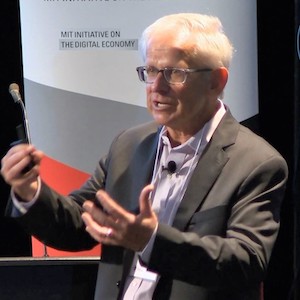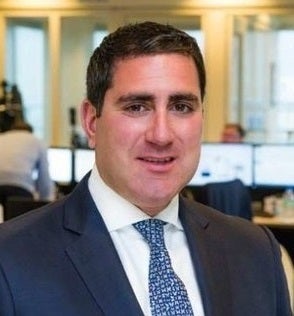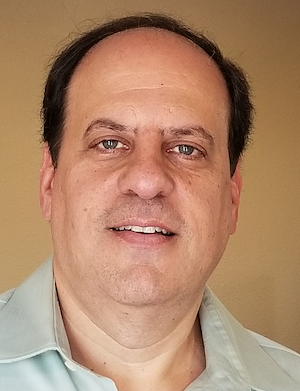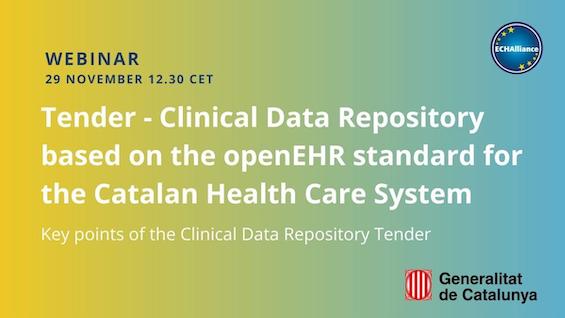 Today in healthcare, platforms are understood mostly as “technology”. That’s not wrong, but it’s limiting. We want to offer you a more expansive view of platforms, and in turn, understand platforms as being more than just technology. This post is the third in our series on The New Rules of Healthcare Platforms. In this essay, we will: Explain why platform business models are NOT new; Share a survey of health plan execs that documents a view of platforms as “technology”; Explain how network effects are the North Star of platform business models and strategy; Expand your view of platforms beyond just “technology.”
Today in healthcare, platforms are understood mostly as “technology”. That’s not wrong, but it’s limiting. We want to offer you a more expansive view of platforms, and in turn, understand platforms as being more than just technology. This post is the third in our series on The New Rules of Healthcare Platforms. In this essay, we will: Explain why platform business models are NOT new; Share a survey of health plan execs that documents a view of platforms as “technology”; Explain how network effects are the North Star of platform business models and strategy; Expand your view of platforms beyond just “technology.”
Open Source Software Is Transforming Healthcare
 In the summer of 2022, the UK government and NHS England published its Open Source Policy, stating that open source technology is: Particularly suitable for use within the healthcare industry where, through active collaboration between IT suppliers and user/clinicians communities, solutions can be honed to maximise benefits to delivery of health and social care. The public statement by NHS England is just the latest development in a broader trend: The wholehearted embrace of open source software by the healthcare sector. And no wonder; open source presents myriad opportunities for this most complex of industries, with potential solutions across various sub-sectors. Yes, open source is now powering everything from medical wearables to healthcare human resource management.
In the summer of 2022, the UK government and NHS England published its Open Source Policy, stating that open source technology is: Particularly suitable for use within the healthcare industry where, through active collaboration between IT suppliers and user/clinicians communities, solutions can be honed to maximise benefits to delivery of health and social care. The public statement by NHS England is just the latest development in a broader trend: The wholehearted embrace of open source software by the healthcare sector. And no wonder; open source presents myriad opportunities for this most complex of industries, with potential solutions across various sub-sectors. Yes, open source is now powering everything from medical wearables to healthcare human resource management.
- Login to post comments
Some Barriers and Challenges to the CDC's Data Modernization Initiative
 As we have discussed in earlier posts, the Centers for Disease Control and Prevention (CDC) has launched a Data Modernization Initiative (DMI) focused on improving the data management capacity of public health in the United States. The major focus of this initiative is on investments in both people as well as systems and data to improve public health response. Though Congress has appropriated a significant amount of funding for Federal and state, territorial, local, and tribal (STLT) public health agencies, there are some sizable barriers and challenges to seeing the vision for DMI come to fruition:
As we have discussed in earlier posts, the Centers for Disease Control and Prevention (CDC) has launched a Data Modernization Initiative (DMI) focused on improving the data management capacity of public health in the United States. The major focus of this initiative is on investments in both people as well as systems and data to improve public health response. Though Congress has appropriated a significant amount of funding for Federal and state, territorial, local, and tribal (STLT) public health agencies, there are some sizable barriers and challenges to seeing the vision for DMI come to fruition:
- Login to post comments
The New Rules of Healthcare Platforms (Part 3): Platform Thinking Expands from “Technology” to Business Model & Strategy
- Login to post comments
A Data Scientist's Guide To Open Source Community Analysis
 In the golden age of data analysis, open source communities are not exempt from the frenzy around getting some big, fancy numbers onto presentation slides. Such information can bring even more value if you master the art of generating a well-analyzed question with proper execution. You might expect me, a data scientist, to tell you that data analysis and automation will inform your community decisions. It's actually the opposite. Use data analysis to build on your existing open source community knowledge, incorporate others, and uncover potential biases and perspectives not considered. You might be an expert at implementing community events, while your colleague is a wiz at all things code. As each of you develops visualizations within the context of your own knowledge, you both can benefit from that information.
In the golden age of data analysis, open source communities are not exempt from the frenzy around getting some big, fancy numbers onto presentation slides. Such information can bring even more value if you master the art of generating a well-analyzed question with proper execution. You might expect me, a data scientist, to tell you that data analysis and automation will inform your community decisions. It's actually the opposite. Use data analysis to build on your existing open source community knowledge, incorporate others, and uncover potential biases and perspectives not considered. You might be an expert at implementing community events, while your colleague is a wiz at all things code. As each of you develops visualizations within the context of your own knowledge, you both can benefit from that information.
- Login to post comments
A New Generation Of Tools For Open Source Vulnerability Management
 Product security incident response teams (PSIRTs) are teams of security professionals that work diligently behind the scenes to protect software products and services of companies. A PSIRT is a different breed than a computer security incident response team (CSIRT), those that tend to be called Information Security. The difference is simple but stark: a CSIRT focuses on responding to incidents that affect a company's infrastructure, data or users. A PSIRT focuses on responding to incidents that affect products a company builds, the most common being the discovery of a vulnerability or security defect, and subsequent actions to manage or remediate. Read More »
Product security incident response teams (PSIRTs) are teams of security professionals that work diligently behind the scenes to protect software products and services of companies. A PSIRT is a different breed than a computer security incident response team (CSIRT), those that tend to be called Information Security. The difference is simple but stark: a CSIRT focuses on responding to incidents that affect a company's infrastructure, data or users. A PSIRT focuses on responding to incidents that affect products a company builds, the most common being the discovery of a vulnerability or security defect, and subsequent actions to manage or remediate. Read More »
- Login to post comments
Presentation on the Catalan Health Care System adoption of openEHR
Catalonia is moving towards a future in which concepts such as patient-centric, data-centric, longitudinal electronic health record, integrated care, open platform, and clinical knowledge management are routine practice. On November 29 representatives of the Catalonian government will be holding a seminar to provide more information on the tender launched to procure a clinical knowledge management platform service according with the openEHR standard.

- Login to post comments
The New Rules of Healthcare Platforms (Part 2): Pipe Scale vs. Platform Scale
 Platform businesses scale differently than traditional businesses. Platforms scale through network effects. In the previous post, we introduced and described a widely used metaphor: pipes vs. platforms. Traditional businesses are pipes. Their value chains are linear. Value is added at sequential stages before a final product or service is delivered to consumers at the end of the pipeline. Platforms do not produce goods or services themselves—they make connections among stakeholders and facilitate value exchange among those stakeholders. Value is created outside the platform. Both pipeline businesses and platform businesses strive to achieve scale—but the type of scale they strive for is vastly different. In this post, we’ll explain how pipeline businesses strive for economies of scale (on the supply side) and how platform businesses scale through network effects (on the demand side).
Platform businesses scale differently than traditional businesses. Platforms scale through network effects. In the previous post, we introduced and described a widely used metaphor: pipes vs. platforms. Traditional businesses are pipes. Their value chains are linear. Value is added at sequential stages before a final product or service is delivered to consumers at the end of the pipeline. Platforms do not produce goods or services themselves—they make connections among stakeholders and facilitate value exchange among those stakeholders. Value is created outside the platform. Both pipeline businesses and platform businesses strive to achieve scale—but the type of scale they strive for is vastly different. In this post, we’ll explain how pipeline businesses strive for economies of scale (on the supply side) and how platform businesses scale through network effects (on the demand side).
- Login to post comments
ONC HITAC Public Health Data Systems Task Force Releases Recommendations
 On November 10, 2022 the Office of the National Coordinator for Health Information Technology’s (ONC) Health Information Technology Advisory Committee (HITAC) accepted and approved the recommendations of its ad hoc Public Health Data Systems Task Force. As discussed in an earlier post, the Task Force has been meeting since August 2022 and was charged with examining how improvements might be made in ONC certification rules for criteria related to public health data submission. In addition, and perhaps for the first time, the task force was also charged with developing recommendations related to the public health side of the equation: how public health data systems and/or standards might improve to ensure a smoother flow of information with clinical care. Read More »
On November 10, 2022 the Office of the National Coordinator for Health Information Technology’s (ONC) Health Information Technology Advisory Committee (HITAC) accepted and approved the recommendations of its ad hoc Public Health Data Systems Task Force. As discussed in an earlier post, the Task Force has been meeting since August 2022 and was charged with examining how improvements might be made in ONC certification rules for criteria related to public health data submission. In addition, and perhaps for the first time, the task force was also charged with developing recommendations related to the public health side of the equation: how public health data systems and/or standards might improve to ensure a smoother flow of information with clinical care. Read More »
- Login to post comments
How Open Source Powers Innovation
 Where do people come together to make cutting-edge invention and innovation happen?....What of open source software? Certainly, major projects are highly collaborative. Open source software also supports the kind of knowledge diffusion that, throughout history, has enabled the spread of at least incremental advances in everything from viticulture to blast furnace design in 19th-century England. That said, open source software, historically, had a reputation primarily for being good enough and cheaper than proprietary software. That's changed significantly, especially in areas like working with large volumes of data and the whole cloud-native ecosystem. This development probably represents how collaboration has trumped a tendency towards incrementalism in many cases. IP concerns are primarily handled in open source software—occasional patent and license incompatibility issues notwithstanding.
Where do people come together to make cutting-edge invention and innovation happen?....What of open source software? Certainly, major projects are highly collaborative. Open source software also supports the kind of knowledge diffusion that, throughout history, has enabled the spread of at least incremental advances in everything from viticulture to blast furnace design in 19th-century England. That said, open source software, historically, had a reputation primarily for being good enough and cheaper than proprietary software. That's changed significantly, especially in areas like working with large volumes of data and the whole cloud-native ecosystem. This development probably represents how collaboration has trumped a tendency towards incrementalism in many cases. IP concerns are primarily handled in open source software—occasional patent and license incompatibility issues notwithstanding.
- Login to post comments
The New Rules of Healthcare Platforms (Part 1): Value Creation Shifts from Pipes to Platforms
 Value for customers is created differently on platforms than by traditional product/service business models. Today we’ll present and discuss the metaphor of how traditional businesses can be thought of as “pipelines” and how these pipes differ from digital platforms. This post is the first in a new series: “The New Rules of Healthcare Platforms.” We’ll be writing about platform thinking, new mental models, and the new economics of platform business models and strategy. We’ll have at least seven posts to explain these new rules. You’ll have some unlearning to do. We’ll illustrate how platform business models are fundamentally different than traditional product/service business models. To understand platforms, we need to change more than just our thinking—we need to learn new rules about how the digital world works and how platforms fit in.
Value for customers is created differently on platforms than by traditional product/service business models. Today we’ll present and discuss the metaphor of how traditional businesses can be thought of as “pipelines” and how these pipes differ from digital platforms. This post is the first in a new series: “The New Rules of Healthcare Platforms.” We’ll be writing about platform thinking, new mental models, and the new economics of platform business models and strategy. We’ll have at least seven posts to explain these new rules. You’ll have some unlearning to do. We’ll illustrate how platform business models are fundamentally different than traditional product/service business models. To understand platforms, we need to change more than just our thinking—we need to learn new rules about how the digital world works and how platforms fit in.
- Login to post comments